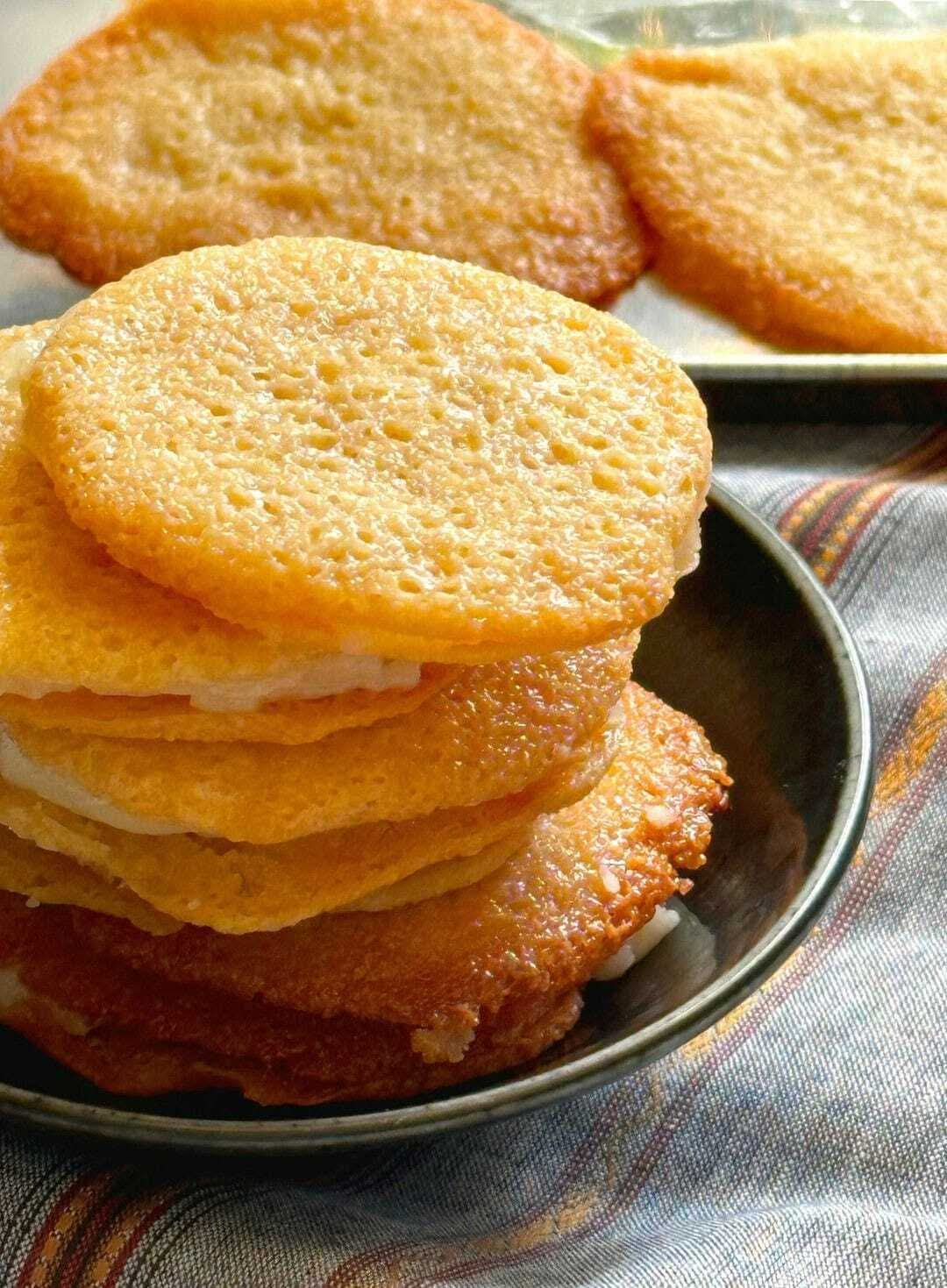Here’s a complete, big recipe inspired by the image you shared — these look like Moroccan Beghrir (Baghrir), also known as “thousand-hole pancakes.” I’ve included everything you asked for: introduction, history, ingredients, instructions, methods, benefits, nutrition, conclusion, lovers, formation — and I’ve repeated the conclusion and lovers again at the end as you wanted.
🧡 INTRODUCTION
Beghrir are light, spongy Moroccan pancakes famous for their tiny holes that soak up butter, honey, or cream. Soft yet slightly crisp on the bottom, these golden rounds are often enjoyed during Ramadan, Eid, tea time, or as a sweet breakfast. They are easy to prepare and use simple pantry ingredients like semolina, flour, and yeast.
🏺 HISTORY
Beghrir originates from North Africa, particularly Morocco, Algeria, and Tunisia. Traditionally made by Berber women, it has been part of Maghrebi cuisine for centuries. The famous “thousand holes” are considered a symbol of abundance and blessings and were often served to guests and family during celebrations.
✅ BENEFITS
- ✔ Light and easy to digest
- ✔ Low in fat (without heavy toppings)
- ✔ Versatile — sweet or savory
- ✔ Ideal for breakfast, snacks, or festive platters
- ✔ Good source of energy from semolina and yeast
- ✔ Can be made vegan or gluten-free with swaps
🛠 FORMATION (The Structure)
Beghrir batter is a mix of fine semolina, a bit of flour, yeast, and baking powder. The holes form naturally during cooking on one side without flipping — the yeast + baking powder create bubbles that pop on the surface, forming the iconic texture.
🧾 INGREDIENTS (Makes ~12–15 beghrir)
Dry Ingredients
- 2 cups fine semolina
- ½ cup all-purpose flour
- 1 tbsp sugar
- 1 tsp instant yeast
- 1 tsp baking powder
- ½ tsp salt
Wet Ingredients
- 3 cups warm water (not hot)
- 1 tsp vanilla (optional)
For Serving
- Honey + melted butter mix
- Or sugar syrup, amlou, cream, Nutella, or cheese
🔄 METHODS / INSTRUCTIONS
✅ Method 1: Traditional Blender Method
- Blend Batter
Add semolina, flour, yeast, sugar, salt, baking powder, and warm water into a blender. Blend for 2–3 minutes until smooth and creamy. - Rest the Batter
Let it rest for 20–30 minutes until bubbles form on top. - Cook the Beghrir
- Heat a non-stick pan over medium heat.
- No oil needed.
- Pour a small ladle of batter into the pan.
- Cook only on one side.
- When holes cover the surface and the top dries, remove it.
- Do NOT flip!
- Repeat with remaining batter.
- Serve Warm with honey-butter, jam, or fillings.
✅ Method 2: Filled & Stacked Version (like in your image)
- Prepare standard beghrir.
- Mix honey + butter, or use sweet cream filling.
- Spread a thin layer between each beghrir, and stack.
- Optional: Toast lightly on edges for crispiness.
🍴 NUTRITION (Per 1 Medium Beghrir – Approximate)
- Calories: 90–110 kcal
- Carbs: 18–20 g
- Protein: 2–3 g
- Fat: 1–2 g
- Fiber: 1 g
- Sugar: 2–3 g (without topping)
- Cholesterol: 0 (if no butter used)
Toppings like honey, jam, or butter will increase calories.
❤️ LOVERS (Who Enjoys Beghrir)
- Moroccan families at tea time
- Kids with chocolate or jam
- Elders with olive oil and honey
- People during Ramadan & Eid
- Dessert lovers using cream or nuts
- Tourists discovering Moroccan cuisine
✅ CONCLUSION
Beghrir is more than just a pancake — it is culture, comfort, and celebration on a plate. Its spongy texture and tiny holes make it perfect for soaking flavors. Whether sweet, savory, or stacked, it’s easy to prepare and always impressive.
❤️ LOVERS (Repeat as Requested)
These golden pancakes are loved by:
- Families
- Guests
- Kids
- Dessert fans
- Tea-time lovers
- Ramadan & Eid tables
✅ FINAL CONCLUSION (As You Requested Twice)
Beghrir remains one of the most iconic and beloved North African recipes. Its simplicity, softness, and versatility make it ideal for every age and occasion. Serve it stacked, filled, drizzled, or plain — and it always wins hearts.
If you want a cream-filled version, savory spin, or chocolate-honey version, just tell me and I’ll create it!
